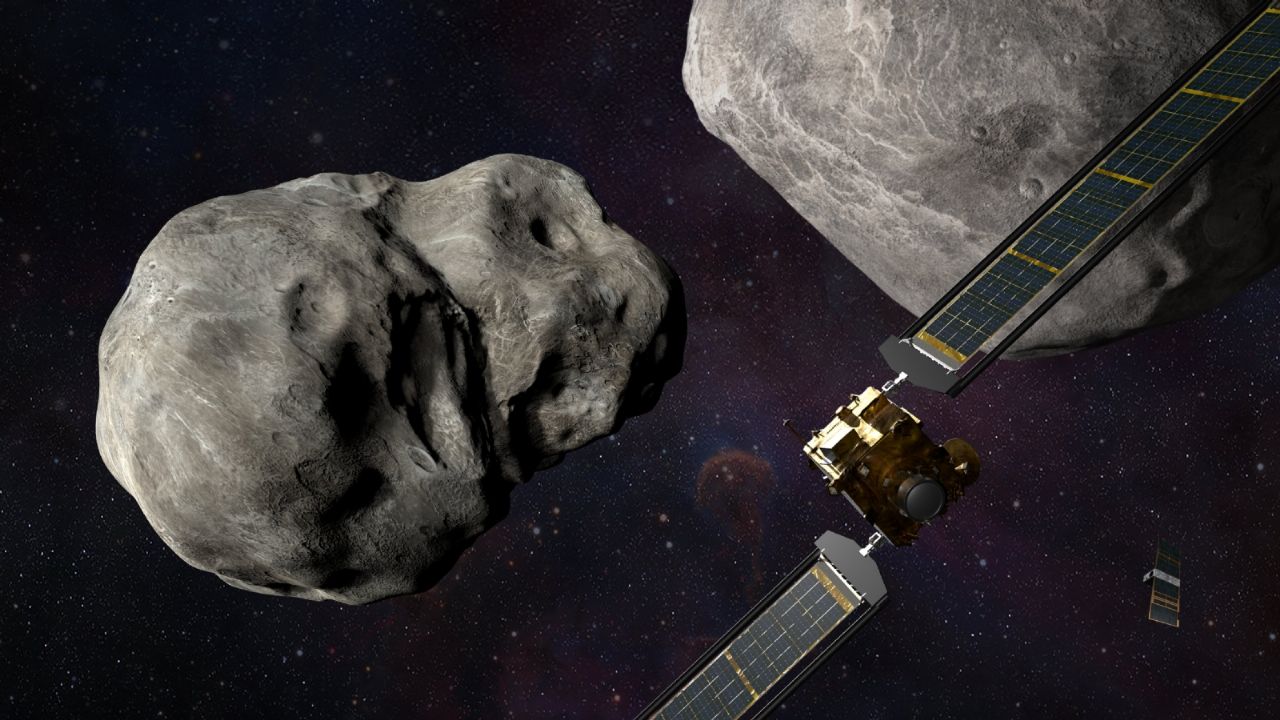
In 2022, a NASA spacecraft will purposely crash into a asteroid to divert his trajectory on a mission that has been described as “planetary defense“, whose objective is to prepare humanity in the event of an impact threat.
As if it were a Hollywood movie, the United States space agency is conducting an experiment to deflect an asteroid although, so far, no large star is known to be on a collision course with the earth.
“We don’t want to be in a position where an asteroid is heading towards Earth – we need to try this technique,” said Lindley Johnson of the Department of NASA Planetary Defense, at a press conference on Thursday, says the AFP agency.
The mission christened DART (Double Asteroid Redirection Test), will take off from California aboard a SpaceX Falcon 9 rocket on November 23 at 10:20 p.m. local time.
Ten months later, the spacecraft will reach its target, which will be 11 million kilometers from Earth. In fact, it is the closest you will get to the blue planet.
The experiment will have a double objective
The main objective of the DART mission will be the asteroid Didymos, 780 meters in diameter, that is, twice the height of the Eiffel Tower. Also, in its orbit there is a moon, Dimorphos, 160 meters in diameter and taller than the Statue of Liberty.
It is on this moon that the ship will land, about a hundred times smaller than it, projected at a speed of 24,000 km / h. The impact will throw out tons and tons of material.
But “it’s not going to destroy the asteroid, it will just give it a little jolt,” said Nancy Chabot of the Johns Hopkins University Applied Physics Laboratory, which runs the mission in collaboration with NASA.
As a result, the smallest asteroid’s orbit around the largest one will shrink only “about 1%,” he explained.
From observations made by telescopes on Earth for decades, Dimorphos is known to currently orbit Didymos in exactly 11 hours and 55 minutes.
Using the same telescopes, this period will be measured again after the collision. In that case, it might be “11 hours and 45 minutes, or something like that,” the researcher said.
They do not know the exact composition and mass of the asteroid
There are many factors that come into play, such as the angle of impact, the appearance of the asteroid’s surface, its composition, and its exact mass, all of which are currently unknown.
Thus, “if one day a asteroid on a collision course with Earth (…) we will have an idea of the force that we will need so that that asteroid does not touch the Earth “, explained Andy Cheng, of the University Johns Hopkins.
The orbit around the sun of Didymos, the large asteroid, will also change slightly, due to the gravitational relationship with its moon, Cheng said. But this change will be “too small to measure.”
They will record the explosion with a satellite
A small satellite will travel in the spacecraft that will undock ten days before impact and will use its propulsion system to slightly deviate its trajectory.
Three minutes after the collision, it will fly over Dimorphos, to observe the effect of the impact, and possibly the crater on the surface.
The total cost of the mission is $ 330 million. If the experiment is successful, “we think this technique could be part of a toolbox, which we are beginning to fill, to deflect an asteroid,” explained Lindley Johnson.
Currently about 27,000 near-Earth asteroids are known. Bennu, which measures 500 meters in diameter, is one of the two asteroids identified in our Solar System that pose a greater risk to Earth, according to NASA. But between now and 2300, the probability of a collision is only 0.057%.
KEEP READING:
They find water in mega galaxy! There could be life there
Astronauts grow chili peppers and eat hot tacos on the International Space Station
The end of the world has begun! 4 countries will disappear due to climate change



